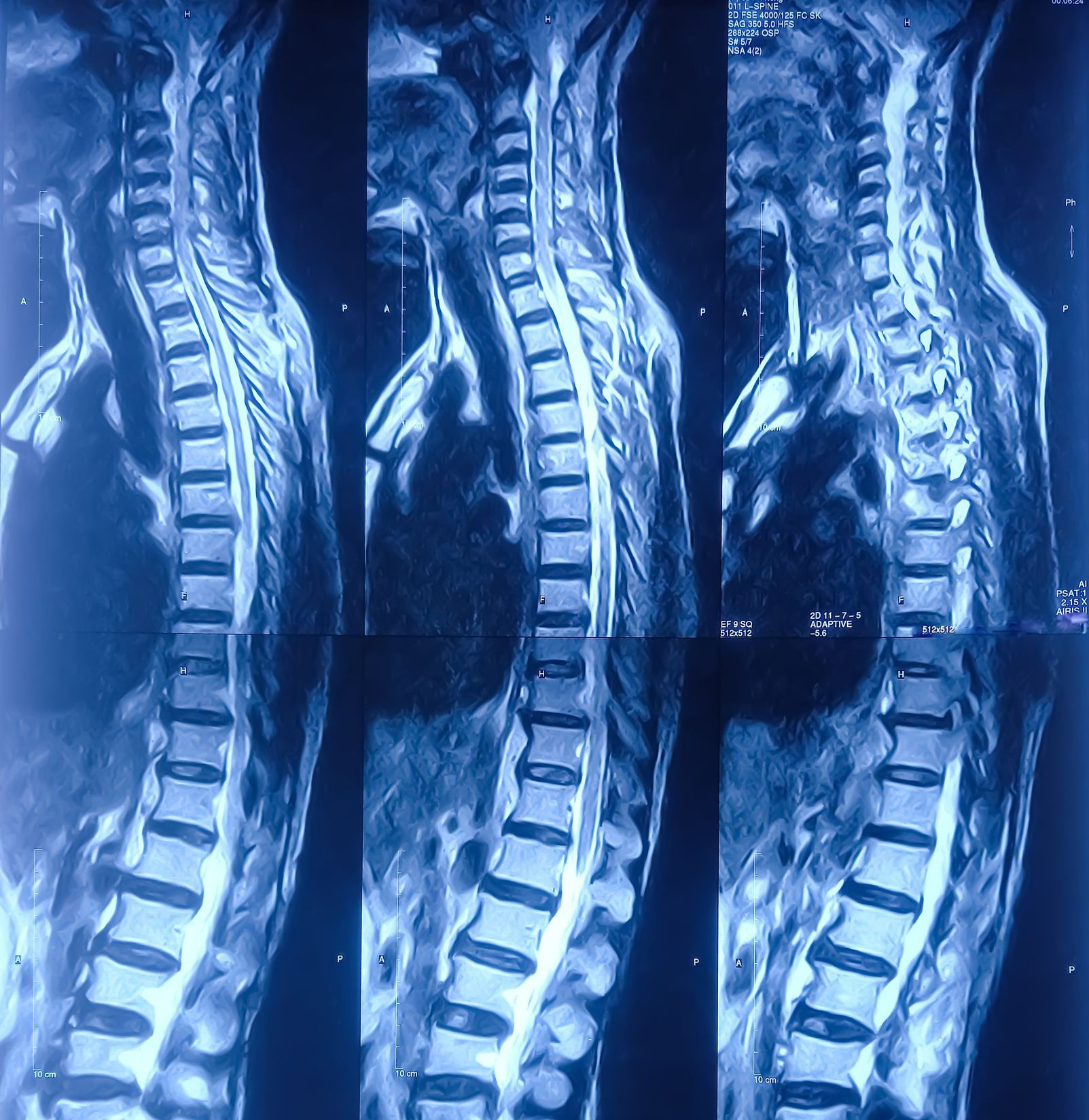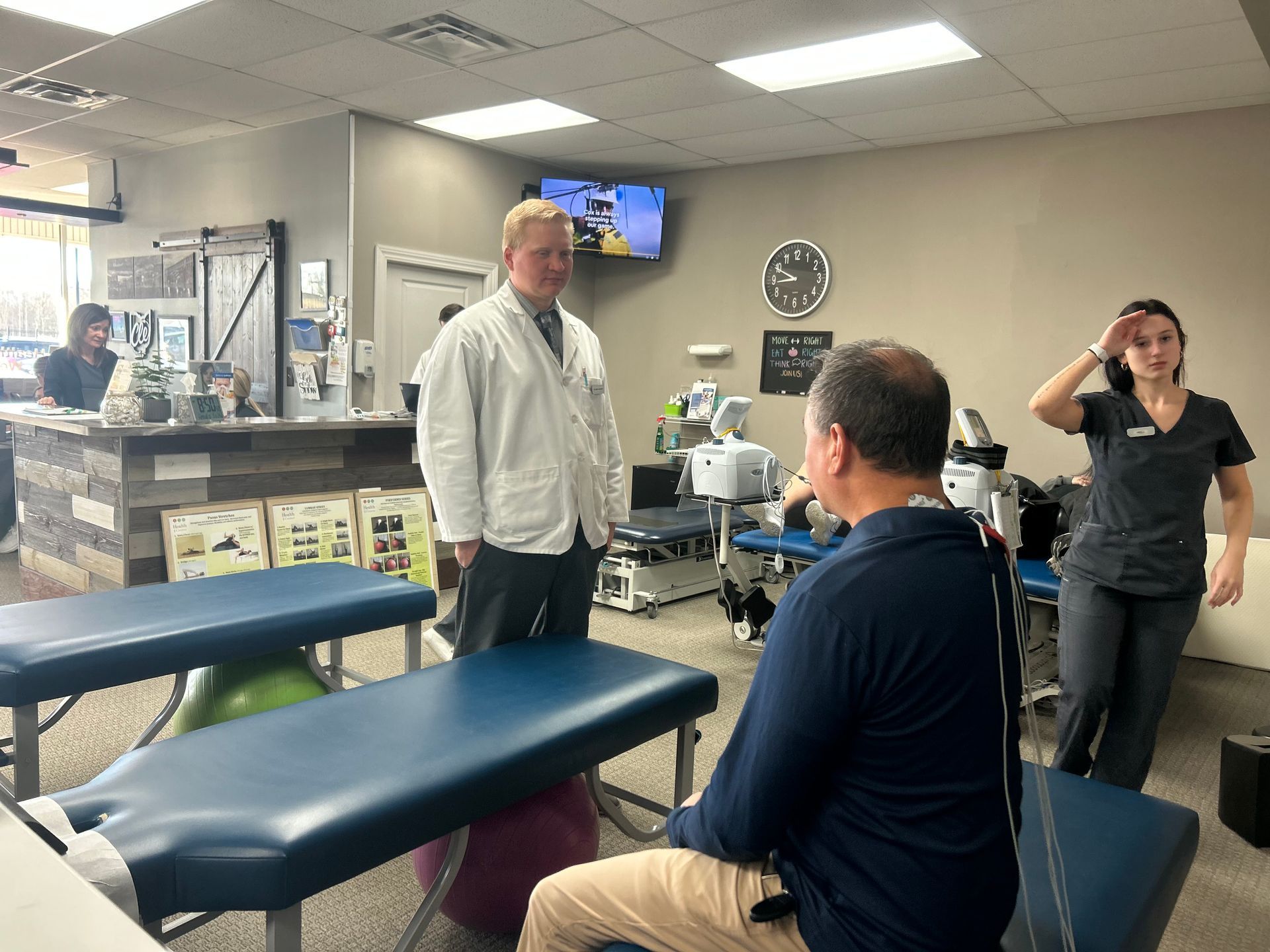NON-SURGICAL SPINAL DECOMPRESSION IN CLEVELAND, OHIO
$44
New Patient Special
Includes consultation, exam,
and X-Rays (if necessary)
Contact Us
How Does Non-Surgical Spinal Decompression Work?
Non-surgical spinal decompression is a therapy used to relieve pressure on the spine, typically to treat conditions like herniated discs, sciatica, and spinal stenosis. The goal is to create space between the vertebrae to reduce pressure on the nerves and improve circulation to the affected area.
Here's how it works:
- Traction Application: A patient is typically strapped onto a specialized decompression table that can move. The table applies controlled, gentle traction or decompression to the spine, usually in the lower back or neck, depending on the location of the issue. This pulling motion helps to stretch and decompress the vertebrae.
- Decompression Process: By creating negative pressure within the discs, the technique helps to pull the herniated or bulging disc material back toward the center, potentially relieving pressure on nerves. It may also increase the flow of nutrient-rich fluids to the discs, which helps promote healing.
- Treatment Duration and Frequency: The therapy typically lasts about 20-30 minutes per session and may require multiple treatments over the course of several weeks.


Who Is a Good Candidate for Non Surgical Spinal Decompression (NSSD) ?
1. People with Herniated or Bulging Discs:
- When the soft material inside a disc (nucleus pulposus) pushes out, it can press on nearby nerves, causing pain, numbness, or weakness.
2. People with Degenerative Disc Disease:
- As discs naturally lose water content and become thinner with age, they may lose their ability to cushion the spine properly, leading to pain. Spinal decompression can help by improving nutrient flow to these discs.
3. People with Sciatica:
- This condition occurs when pressure on a nerve causes pain that radiates down the leg. If the pain is caused by a herniated or bulging disc, spinal decompression may help alleviate pressure on the affected nerve root.
4. People with Spinal Stenosis:
- Spinal stenosis occurs when the spaces within the spine narrow and put pressure on the spinal cord or nerves. Decompression can help increase the space in these areas, providing relief from nerve compression.
5. People with Facet Joint Syndrome:
- Facet joints in the spine can wear out over time, causing inflammation and pain. By decompressing the spine, this treatment may reduce pressure on the facet joints.
6. Those Seeking an Alternative to Surgery:
- Spinal decompression is often considered as a non-invasive alternative to surgery for people with certain conditions that haven't responded well to traditional treatments like physical therapy or medications.
Who Should Avoid It?
Not everyone is a good candidate for non-surgical spinal decompression. It may not be suitable for:
- People with severe osteoporosis or spinal fractures.
- Those with tumors, infections, or other serious spine conditions.
- Pregnant individuals.
- Those with advanced arthritis or spinal instability.
Dr. Frank Dachtler has over 25 years experience in treating such injuries and over 20 years working specifically with Spinal Decompression. A through Examination, review of any previous imaging and even new x-rays (done onsite) are conducted with every patient to determine if Spinal Decompression is the best option for them.
Non-surgical spinal decompression is considered safe, especially when performed by a trained and experienced practitioner. However, like any medical treatment, it carries some risks and may not be suitable for everyone.


Safety Considerations:
1. Low Risk of Serious Side Effects:
- Most people tolerate spinal decompression well with minimal discomfort. The process typically involves gentle stretching of the spine, which is designed to alleviate pressure on discs and nerves. Side effects, if they occur, are usually mild, such as temporary soreness or muscle stiffness, similar to what might happen after a workout.
2.Contraindications: While rare, certain conditions make non-surgical spinal decompression unsuitable, such as:
- Osteoporosis or other conditions that weaken the bones.
- Spinal fractures or advanced spinal instability.
- Spinal tumors or infections.
- Severe disc disease where the disc is completely degenerated or the spine is severely misaligned.
- Pregnancy (due to potential risks to both the mother and baby).
This is why it is important to be examined by our trained physicians prior to any considerations for treatment.
What to Expect on Your First Visit with Us.
Pre-Treatment Assessment: Before starting treatment, a thorough evaluation, including a review of your medical history, physical examination, and imaging (like an X-ray or MRI) to ensure you're a good candidate for decompression. If needed, we can take new x-rays at the office.
A treatment plan will be written up and presented describing all recommendations, their benefit and any costs that may be associated with the program,
Supervision and Technique: The procedure is always done under professional supervision with proper equipment. Our Doctors and Therapists work together to also oversee any strengthening exercise and rehabilitation.
Gradual Progression: Some people may experience temporary soreness, much like the sensation after a good stretch or physical therapy session. This is usually short-lived and decreases as the body adjusts. We will monitor progress closely and you will meet with a Doctor on every visit to ensure that you are responding well to the treatment.

4.9 STAR RATING ON GOOGLE WITH 200+ REVIEWS!












